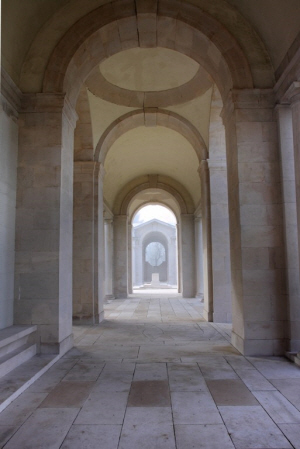



No. 42747, Private, William Edward SINCLAIR
Aged 19

|
the original identification was incorrect
. William Edward Sinclair apparently was born in Hackney in 1899, son of Laura Grace SINCLAIR. His birth registration has not been found His mother married Bertie BENTICK in 1906 (Newmarket Q3-1906 3b:1185) 1901 census...Not found but his surname is very badly written in 1911 census and transcribed as SINSTEAIR by Ancestry and also by Find my Past, but that has not got us anywhere further. Apparently his mother [22] born Brighton, was a servant at 387 Mare Street, Hackney for the Chattaway family but William was not with her. 1911 census... Aged 12, he was at 1 Langham Road, West Green, Tottenham with his stepfather Bertie Bentick [25] boot maker born Fordham, Cambs; his mother Laura Grace [32] born Brighton; half sisters Isabelle Victoria BENTICK [2] born Fordham and Rosa Ellen BENTICK [1] born Freckenham. This was the address on Bertie's Army records. He was discharged medicaly unfit on 11-11-1914. The pension card has his mother, Mrs BENTICK at The Green, Freckenham. Despite not finding his birth registration or whereabouts in 1901, it seems this is the man named on the memorial. |

|
He enlisted in Horsham, Surrey in about March 1917, resident of Freckenham. His "Soldier's Personal Effects record give his mother as Laura Grace Bentick> The 8th Lincolnshires relieved the 5th King's Own Yorkshire Light Infantry in Gommecourt sector on 1st April 1918, then on 5th April they attacked Rossignol Wood. From the History of the Lincolnshire Regiment (Edited by MAJOR-GENERAL C. R. SIMPSON, C.B.) we have:- "The Lincolns objective was the capture of Duck, Swan and Owl trenches. The night of the 4th /5th of April was miserable in the extreme : rain fell and the inky darkness made the forming-up operations difficult, but by zero (5.30 a.m.) on the 5th companies were disposed as follows : D on the right, A left, C in support, and B in reserve. Tanks had been detailed to assist in the attack, but they were unable to advance. At zero hour, therefore, the Lincolnshire advanced without their assistance . Within fifty yards of the jumping-off line the right section suffered severely from machine-gun fire, and a similar experience befell the left platoon when one hundred and fifty yards from their original trench. Considerable resistance from the first objective (Duck Trench) met the attackers, and heavy fighting took place during which about one hundred Germans were taken prisoner and from sixty to ninety wounded. This objective was captured by 5:45 a.m. Considerable machine-gun fire from both flanks met the attack on the second objective (Swan Trench), otherwise the enemy's resistance was not heavy. Having captured this line also, heavy bombing became general on the right. The line was cleared with the exception of two strong points, roughly on the final objective on the right of the Lincolnshire and at 7.45 a.m. this position was being consolidated. At about 9 a.m., lorries, full of enemy troops, were seen travelling towards Rossignol Wood, but the Lincolnshire still maintained their position. At midday the enemy was reinforced and the position of the battalion was likely to become serious, for touch had not been obtained with either flank, i.e., Australians on the right or Somersets on the left. Gradually the small garrison of Lincolnshire in Swan Trench was driven southwards into the trench system. At about 1 pm. on the right of the battalion, the enemy advanced from the two strong points previously mentioned and cut right into the battalion, dividing it into two sections. " From this time," the records state, " we were overwhelmed and, owing to lack of bombs, we withdrew in good order into our original front line. Very heavy casualties were inflicted on the enemy in this action." The original front line was re-occupied about 5.30 p.m. The narrative states that the conduct of the men was " beyond all praise," their musketry being especially good. No less than fourteen German machine-guns were either taken or destroyed. The 63rd Trench-Mortars were badly cut up before the first objective had been reached, and Lieutenant Francis Brown, M.C. (8th Lincolnshire), being killed. The Brigadier in his report said : "I consider that the behaviour of these battalions, 1 which were composed largely of very young soldiers, was beyond all praise." Casualties suffered by the 8th Lincolnshire in this attack were : 2nd Lieutenant H.F. Moody killed, 2nd Lieutenant C.H.L.Askey died of wounds, 2nd Lieutenants P. Lowe and P.H. Peadon wounded : other ranks � twenty-six killed, ninety-one wounded, eighty-one missing. " Sadly it seems we know a lot about what the battalion did, but little about William Sinclair. |


© Commonwealth War Graves Commission
click here to go to the Commonwealth War Graves Commission website for full cemetery/memorial details